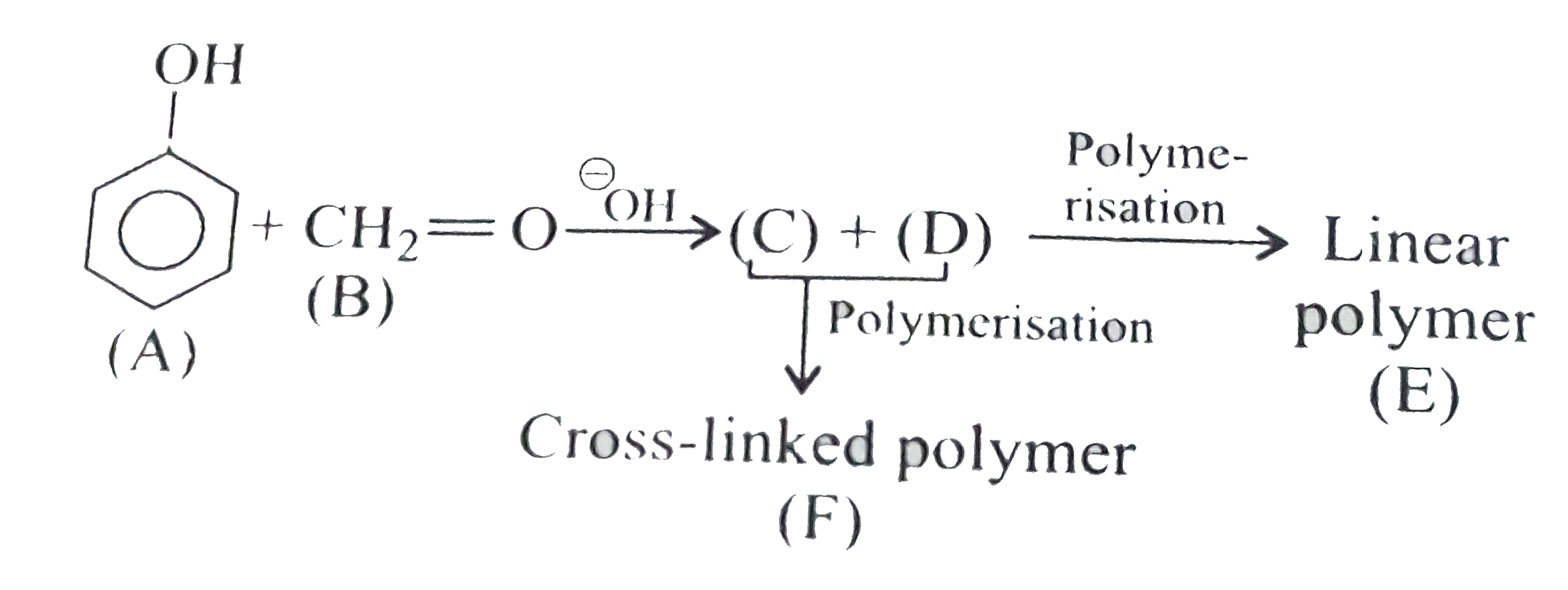Which among the following is a cross-linked polymer ?
Amylopectin
Melamine formaldehyde resin
Glycogens
Polysters
The correct Answer is:B
To determine which among the given options is a cross-linked polymer, we will analyze each option based on their structural characteristics and polymerization methods.
1. Understanding Cross-Linked Polymers:
- Cross-linked polymers are formed when monomeric units are interconnected through covalent bonds, creating a three-dimensional network. This structure gives them unique properties such as increased strength and stability.
2. Analyzing the Options:
- Option A: Amylopectin:
- Amylopectin is a branched polymer made up of glucose units linked by glycosidic bonds. It does not have cross-links; instead, it has a branched structure.
- Option B: Melamine:
- Melamine can form a cross-linked polymer when reacted with formaldehyde. The reaction leads to the formation of a resin that has a three-dimensional network structure, which is characteristic of cross-linked polymers.
- Option C: Formaldehyde Resin:
- This is a type of cross-linked polymer that results from the polymerization of formaldehyde with compounds like melamine. It exhibits cross-linking due to the formation of a network structure.
- Option D: Glycogen:
- Glycogen is similar to amylopectin and consists of glucose units linked by glycosidic bonds. It is also not a cross-linked polymer.
- Option E: Polyesters:
- Polyesters are formed through the condensation polymerization of diols and dicarboxylic acids. They do not exhibit cross-linking in their typical structure.
3. Conclusion:
- Among the options provided, melamine and formaldehyde resin can form cross-linked polymers. However, since the question asks for a specific cross-linked polymer, melamine is the most direct answer as it is the base compound that reacts to form the cross-linked structure.
Final Answer:
B: Melamine (specifically in the context of melamine-formaldehyde resin).
- Cross-linked polymers are formed when monomeric units are interconnected through covalent bonds, creating a three-dimensional network. This structure gives them unique properties such as increased strength and stability.
- Option A: Amylopectin:
- Amylopectin is a branched polymer made up of glucose units linked by glycosidic bonds. It does not have cross-links; instead, it has a branched structure.
- Option B: Melamine:
- Melamine can form a cross-linked polymer when reacted with formaldehyde. The reaction leads to the formation of a resin that has a three-dimensional network structure, which is characteristic of cross-linked polymers.
- Option C: Formaldehyde Resin:
- This is a type of cross-linked polymer that results from the polymerization of formaldehyde with compounds like melamine. It exhibits cross-linking due to the formation of a network structure.
- Option D: Glycogen:
- Glycogen is similar to amylopectin and consists of glucose units linked by glycosidic bonds. It is also not a cross-linked polymer.
- Option E: Polyesters:
- Polyesters are formed through the condensation polymerization of diols and dicarboxylic acids. They do not exhibit cross-linking in their typical structure.
- Among the options provided, melamine and formaldehyde resin can form cross-linked polymers. However, since the question asks for a specific cross-linked polymer, melamine is the most direct answer as it is the base compound that reacts to form the cross-linked structure.
B: Melamine (specifically in the context of melamine-formaldehyde resin).
Topper's Solved these Questions
- POLYMERSBOOK - AAKASH INSTITUTE ENGLISHCHAPTER - POLYMERSEXERCISE - ASSIGNMENT (SECTION -A)
44 Videos
- POLYMERSBOOK - AAKASH INSTITUTE ENGLISHCHAPTER - POLYMERSEXERCISE - ASSIGNMENT (SECTION -B)
20 Videos
- POLYMERSBOOK - AAKASH INSTITUTE ENGLISHCHAPTER - POLYMERSEXERCISE - TRY YOUR SELF
7 Videos
- ORGANIC CHEMISTRY: SOME BASIC PRINCIPLE AND TECHNIQUESBOOK - AAKASH INSTITUTE ENGLISHCHAPTER - ORGANIC CHEMISTRY: SOME BASIC PRINCIPLE AND TECHNIQUESEXERCISE - TRY YOURSELF
28 Videos
- PRINCIPLES OF QUALITATIVE ANALYSISBOOK - AAKASH INSTITUTE ENGLISHCHAPTER - PRINCIPLES OF QUALITATIVE ANALYSISEXERCISE - Assignment (SECTION H)
9 Videos
Similar Questions
Knowledge Check
Which of the following is a condensation polymer ?
ATeflonBPVCCPolyesterDNeopreneWhich of the following is a condensation polymer?
ATeflonBBakeliteCBuna-SDNeoprene

The cross-linked polymer(F)is:
View SolutionWhich among the following is biodegradable polymer
View SolutionWhich of the following is a thermosetting polymer?
View SolutionWhich of the following is a linear polymer?
View SolutionWhich of the following is not a condensation polymer?
View SolutionWhich of the following is a semisynthetic polymer?
View Solution
